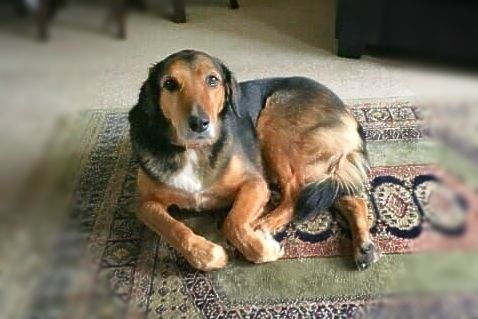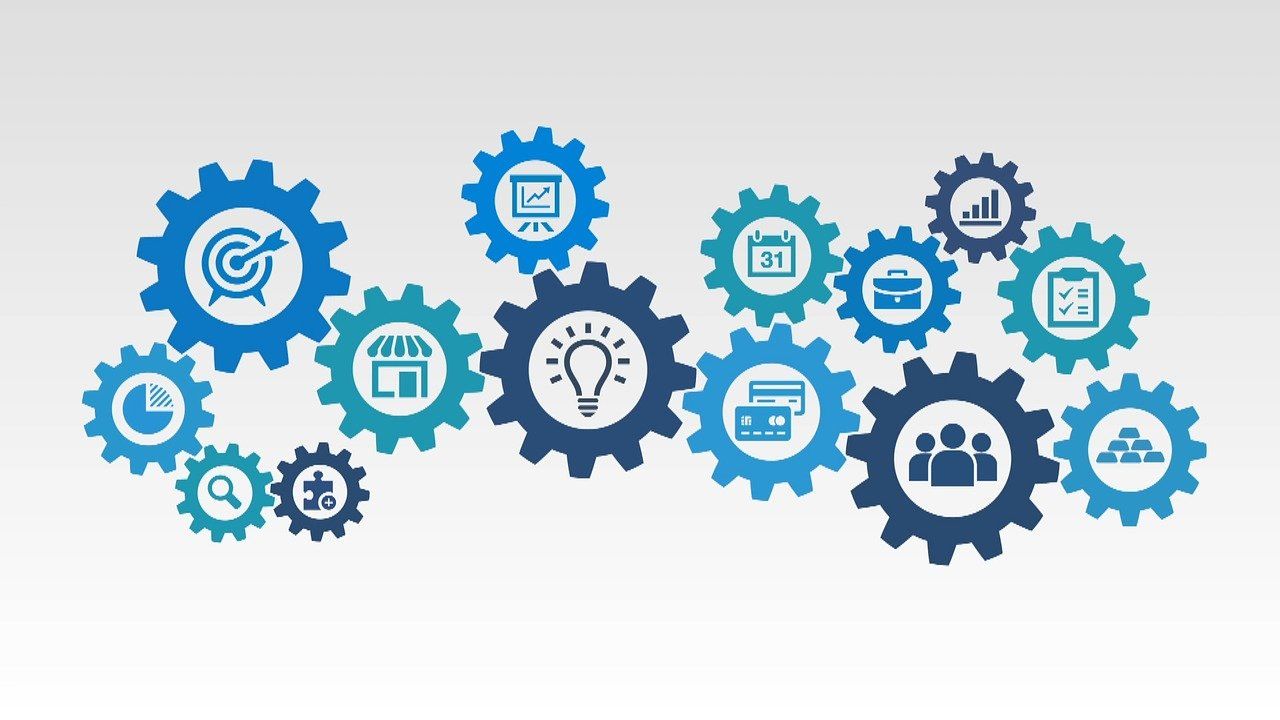Articles
Here are some of the topics that have been occupying our minds or just plain intriguing us lately, and that we thought you might like to hear about. We hope you find them valuable!

By Mary Buckley
•
06 Nov, 2023
At Culture by Design, people that know us, know that we are massive advocates for the power and ROI of a ‘dogs at work’ policy. The research is clear and undeniable, where possible, the presence of dogs and other pets in the workplace makes for a happier environment, with less stress, less anxiety, improved morale, and an overall increase in productivity. Last month, at 14 years of age (approximately 86 in doggy years) Miley, our furry huntaway family member and previously a Culture by Design team coworker suddenly became very ill on a random Tuesday afternoon. Later that night, Miley went into surgery and what the vet found, meant we sadly had to let our beautiful girl go. In the wee hours of Wednesday morning, my husband and I bought Miley home to the farm and when the sun rose, we buried her under the large oak tree, next to Jock and Lass, her huntaway siblings that had lived a life before Miley’s time. Now while I can say without hesitation, the inconsolable grief felt at losing Miley was hugely intense and similar to the grief of losing my father several years ago, this story is not about grief, loss or even sadness. The key reason for this piece is to personally reflect and celebrate the amazing, paradigm busting work life of Miley. For you see Miley was a working dog, just not in the typical manner of most NZ huntaway working dogs. Rather than the archetypal position of working farm dog, Miley had a work career that spanned several years with successful roles in both the public sector and private business industry. Yes, that’s right NZ Sheepdog Trial Association people in charge, despite your Wikipedia claim that a Huntaway’s core and only task in life is to work stock, Miley broke through your glass ceiling to become an invaluable company team member off the farm! Now for sure, Miley would follow Michael, my husband, around our country property and was happy to do so, it’s just she had little to no interest in the sheep, seemed somewhat terrified of the cows and spent most of her time exploring the landscape, including smelling flowers in the garden. Yes, it became very clear early on that Miley had a vastly different work calling to that of Jock and Lass. That for some reason Miley was born with an extremely high feeling, old soul, intuitive personality akin to that of a human empath, making her the huntaway version of Ferdinand the Bull. It was this highly attuned, empathic nature that was to define Miley’s inevitable career and give her even more meaningful enjoyment in life. To follow are three examples of how Miley the Huntaway dog applied her intellect, personality, and emotional intelligence in the work environment to simply make the world a better place to be: 1. Employee Morale Officer Miley’s working career began with Dynamic Controls, a bio-medical engineering company headquartered in Christchurch, NZ. Miley’s first challenge in breaking the glass ceiling was to first break Charlotte the CEO and prove to Charlotte that dogs in the office were indeed a good idea and would not result in either utter chaos and/or unproductive distraction. At the time I was part of the Executive team reporting to Charlotte, and our team were all located in an open plan office. With a dog bed located next to my desk, this gave Miley ample opportunity to show Charlotte that not only was she not a distraction or chaotic in nature but in fact, her furry personality was just genius for improving morale and reducing stress, both of which, of course, resulted in increased productivity. It was Lucy Hilling, our HR Coordinator at the time that (once Miley had Charlotte across the line) promoted Miley to the role of Employee Morale Officer, issuing her a company photo security badge. On average Miley would spend 1-2 days a week in the office, and while she was now welcome in the Exec office, most workdays had barely begun before Miley was retrieved by various employees and would often end up spending the day in the Engineering department. This is where Miley achieved most of her more meaningful, satisfying work moments, supporting engineers that were at times under extreme time pressures to complete stage gate projects.

30 Aug, 2023
So, you’ve decided that now is the time to get proactive about your workplace culture. Excellent call! With everything we've all been through over the last few years, never has workplace culture been more critical for business success. However, there is a critical step you’ll need to take first, if you want all your good work to pay off.

11 May, 2022
In a recent post, I postured the view that working with people who think very differently than us can be difficult, but also hugely valuable. In fact, diverse thinking is what great, high-performing teams are made of. Sadly however, a team made up of diverse thinkers does not naturally lead to success. To the contrary, I’ve seen time and again where highly diverse teams have almost ripped each other apart. Difference, if not understood and appreciated, can lead to major relationship breakdowns because we all tend to make assumptions that others will act, behave and respond similarly to how we do. When that doesn’t happen, it can lead to confusion, frustration, and ultimately conflict and mistrust. What to do? We’ve found the most effective way to avoid all the angst and build successful relationships between diverse thinkers, is to challenge those assumptions and build understanding. If we can understand how others differ from ourselves, and importantly, the strengths that difference brings, then we can start to open a dialog about how to embrace that difference to leverage strengths across a team, while reducing frustration. There are many tools out there to help us understand difference – MBTI, JTI, Hermann Brain, TMI and a host of other psychometrics and personality instruments. These are a great place for a team to start. However, deeply shared understanding was never reached in a single day, so whatever you use, ensure the learning continues well past any initial workshop. The work is never done. Like anything truly beneficial, you have to keep working at it. This is something my business partner and I have to remind ourselves of all the time, because 12 years in we can still drive each other to distraction. But our shared understanding of that difference plus all those years of benefiting from each other’s strengths has built tolerance and compassion for how the other operates and what the other needs. For anyone putting together or growing a team, I’d definitely encourage you to find the “Yin” to your “Yang”. Actively build diversity of thinking into your team and you’ll be so much stronger for it. Just make sure you put in the work! The more you understand and respect your differences, the more you can leverage them and grow from the other’s perspective. Working with opposites takes more effort to be sure. But do it well, and you’ll never want to go back! Marie Webber Director, Workplace Culture Specialist Culture by Design

28 Jul, 2021
Are you achieving excellence in the world of individual leadership? Great! Now it is time to take your leadership approach to the next level by developing a Leadership Capability profile at the organisational level. What is Leadership Capability & why is it important? Many organisations out there have invested heavily in ensuring their people leaders receive individual leadership development, which supports leaders to feel confident and equipped in their role of leading a functional team. Great! What doesn’t happen often enough though, is where an organisation takes the time to examine and identify what kind of leadership is strategically required across all tier levels of leadership and then bring this leadership to life. In other words, what kind of leadership does the organisation itself need, to ensure a high probability of success in what the organisation is attempting to achieve at a strategic level. Leadership capability is all about ensuring that there is consistent leadership language, expectations, and behaviours all aligned to strategic objectives and across all tiers of leadership, which enables all employees to receive a predictable leadership approach. The power of aligning all tiers of people leadership (not just the senior Executive team) is simply formidable, creating organisational-wide clarity, direction and meaning, and yet for many organisations out there, they are sadly not realising this untapped potential. Determining the bespoke purpose of Leadership Capability at your organisation So where to start in examining and identifying your bespoke Leadership Capability requirements. It begins by exploring the organisation’s core anchors, that is, your company core purpose, what your organisation aspires to be and the resulting strategy for your business. When you understand these key anchors, you are in a good position to start analysing what kind of leadership would make sense for your organisation and it is through this analysis, you can create your own bespoke Leadership Capability profile. Aligning Leadership Capability to core anchors enables a better leadership fit. By aligning your organisation's Leadership Capability profile to your core anchors, it will enable you to think a lot more intelligently about the actual purpose of leadership at your business and which key leadership elements are required to create the ideal leadership culture and climate. Additionally, identifying the bespoke leadership culture and climate you want to create in your organisation will enable you to significantly increase your ability to recruit and develop people leaders that are a strong cultural fit for the business. Ability to deploy & cascade clarity throughout the organisation Once your organisation has developed its Leadership Capability profile and is clear on what the organisation requires in its leadership model to provide clarity and direction, existing and future leaders can be developed into the bespoke leadership model. When this happens, there is a much higher probability that all functional teams will receive a crystal-clear, cascaded understanding of an organisation's core purpose, and future direction by-way of all leaders communicating the same messaging and expectations. With this clarity and direction in place, people will have much more meaning in their jobs and role responsibility, and as a result tend to experience a lot more job satisfaction because they know that they are a part of the bigger plan and the individual / team part they play in this bigger plan. Benefits of smarter, more focused Leadership Development initiatives Having a clear view of the required bespoke Leadership Capability across all tiers of leadership enables the organisation to think more clearly about focussed investment in relation to intelligent leadership development initiatives. In addition, it stops the age-old problem of placing people in leadership roles without them firstly receiving the appropriate leadership development to ensure proper, fit for purpose leadership skillset, which is required to be successful in their leadership roles. It is so important for any organisation to recognise that being a leader does not just mean daily management of operational tasks. Intelligent leadership also includes leading the clarity of the organisation's purpose, vision, and strategy, setting the standards and values for all team members, and providing an environment of personal development and ongoing coaching. In addition, having a leadership toolkit of skills, knowledge, and abilities (in line with your bespoke Leadership Capability profile) to develop each team member will enable each leader to delegate more to their functional team members. This in turn allows for leaders to step up, and for team members to stretch their current capabilities and excel beyond their present job description. Creating opportunities for your leaders and team members to step up will undoubtedly lead to a higher level of discretionary effort, enjoyment, with greater efficiency and strategic focussed productively in the workplace. In a nutshell Establishing a bespoke Leadership Capability profile will fundamentally support any organisation to lead successful strategy execution of core anchors. In addition, workplace culture starts and finishes with having fit for purpose leaders and investing in the design and development of a bespoke Leadership Capability profile, which helps to identify fitting leaders, takes your organisational leadership to a whole new level of excellence. Once you are clear on your profile, it's all about bringing it to life through a bespoke leadership development programme. It’s important to note, that when developing your leaders according to your Leadership Capability profile, where possible, bringing your leaders together in person for this type of development has a huge impact on the success factors of the learning and development initiative. Leadership can be a tough, dauting, lonely place and smart leadership development initiatives include, allowing safe space for leaders to learn from other leaders and this is difficult via an individual on-line learning platform. On-line learning platforms definitely have their place in the world of learning & development concepts, just not when it comes to leadership development. It is crucial that you can get your leaders in the same room so they can share their experiences, fears and leadership aspirations and together learn through skilled facilitation, on how to create an inspiring workplace environment, which includes aligned, bespoke leadership behaviours, language and expectations. Mary Buckley Managing Director - CbD

18 Mar, 2020
In the rapidly changing world of Covid-19, more and more New Zealand organisations are being prudent and beginning to prepare for the possibility of remote working from home. As a result, there is increased focus on the mental health issues that are related to working from home and there is good reason for this. As humans we are hard-wired as a social species, to seek out opportunities to be part of a group or community. Most of us have a strong human desire to be socially accepted and as human beings we survive and thrive much better together, that is of course until we don’t, which is unfortunately the case with Covid-19. Self-isolated, remote working from home is clearly a state that is counterintuitive to our hard-wired need for group contact and social acceptance. Hence, the question becomes with the potential reality of working remotely from home for an undefined amount of time, how can we retain a sense of connectivity and community? In addition, how can we ensure there is an acceptable level of productivity where people are still motivated by what they view as meaningful work in a world where there is no longer certainty and stability?
Recent Articles

By Mary Buckley
•
06 Nov, 2023
At Culture by Design, people that know us, know that we are massive advocates for the power and ROI of a ‘dogs at work’ policy. The research is clear and undeniable, where possible, the presence of dogs and other pets in the workplace makes for a happier environment, with less stress, less anxiety, improved morale, and an overall increase in productivity. Last month, at 14 years of age (approximately 86 in doggy years) Miley, our furry huntaway family member and previously a Culture by Design team coworker suddenly became very ill on a random Tuesday afternoon. Later that night, Miley went into surgery and what the vet found, meant we sadly had to let our beautiful girl go. In the wee hours of Wednesday morning, my husband and I bought Miley home to the farm and when the sun rose, we buried her under the large oak tree, next to Jock and Lass, her huntaway siblings that had lived a life before Miley’s time. Now while I can say without hesitation, the inconsolable grief felt at losing Miley was hugely intense and similar to the grief of losing my father several years ago, this story is not about grief, loss or even sadness. The key reason for this piece is to personally reflect and celebrate the amazing, paradigm busting work life of Miley. For you see Miley was a working dog, just not in the typical manner of most NZ huntaway working dogs. Rather than the archetypal position of working farm dog, Miley had a work career that spanned several years with successful roles in both the public sector and private business industry. Yes, that’s right NZ Sheepdog Trial Association people in charge, despite your Wikipedia claim that a Huntaway’s core and only task in life is to work stock, Miley broke through your glass ceiling to become an invaluable company team member off the farm! Now for sure, Miley would follow Michael, my husband, around our country property and was happy to do so, it’s just she had little to no interest in the sheep, seemed somewhat terrified of the cows and spent most of her time exploring the landscape, including smelling flowers in the garden. Yes, it became very clear early on that Miley had a vastly different work calling to that of Jock and Lass. That for some reason Miley was born with an extremely high feeling, old soul, intuitive personality akin to that of a human empath, making her the huntaway version of Ferdinand the Bull. It was this highly attuned, empathic nature that was to define Miley’s inevitable career and give her even more meaningful enjoyment in life. To follow are three examples of how Miley the Huntaway dog applied her intellect, personality, and emotional intelligence in the work environment to simply make the world a better place to be: 1. Employee Morale Officer Miley’s working career began with Dynamic Controls, a bio-medical engineering company headquartered in Christchurch, NZ. Miley’s first challenge in breaking the glass ceiling was to first break Charlotte the CEO and prove to Charlotte that dogs in the office were indeed a good idea and would not result in either utter chaos and/or unproductive distraction. At the time I was part of the Executive team reporting to Charlotte, and our team were all located in an open plan office. With a dog bed located next to my desk, this gave Miley ample opportunity to show Charlotte that not only was she not a distraction or chaotic in nature but in fact, her furry personality was just genius for improving morale and reducing stress, both of which, of course, resulted in increased productivity. It was Lucy Hilling, our HR Coordinator at the time that (once Miley had Charlotte across the line) promoted Miley to the role of Employee Morale Officer, issuing her a company photo security badge. On average Miley would spend 1-2 days a week in the office, and while she was now welcome in the Exec office, most workdays had barely begun before Miley was retrieved by various employees and would often end up spending the day in the Engineering department. This is where Miley achieved most of her more meaningful, satisfying work moments, supporting engineers that were at times under extreme time pressures to complete stage gate projects.

30 Aug, 2023
So, you’ve decided that now is the time to get proactive about your workplace culture. Excellent call! With everything we've all been through over the last few years, never has workplace culture been more critical for business success. However, there is a critical step you’ll need to take first, if you want all your good work to pay off.
Culture by Design
enquiries@culturebydesign.co.nz
22/35 Illinois Drive,
IZone, Rolleston
Christchurch,
NZ

